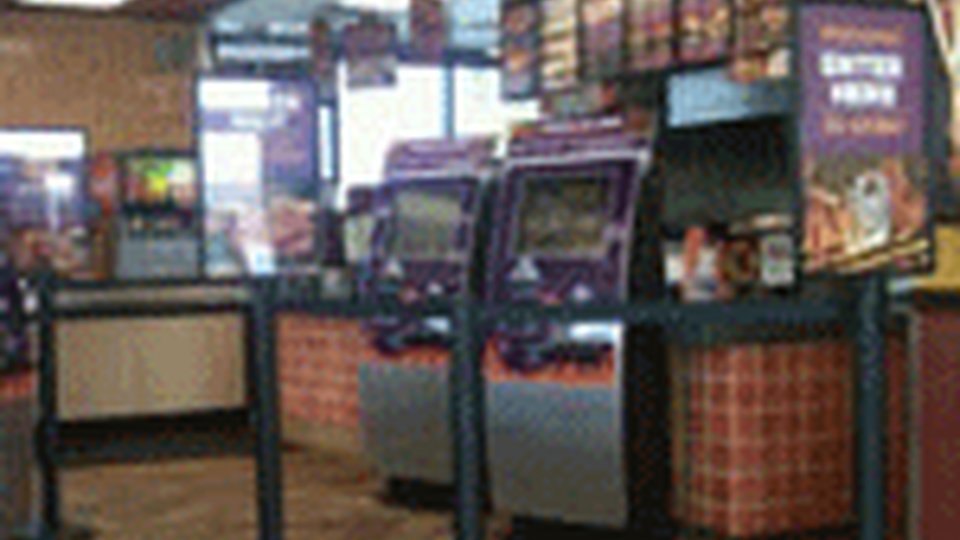Article
Evaluating the necessity of self-service technology
Critics put down self-service in the QSR and fast casual segments, but those who have adopted self-service are finding success.

September 9, 2010
By Ashley Wollmann
Kiosks are a debatable necessity in both the fast casual and quick-service restaurant segments. Various viewpoints tug back and forth, with critics questioning whether kiosks are the right way to enhance customer experience.
Self-service can be appealing to a younger crowd and location may determine the integration of technology. However, kiosks may seem contradicting to customer interface, which QSR has become accustomed to.
Additionally, the recent launch of the iPad as a self-service component has added another dimension to the debate.
Addition to Personal Service
Bob Phibbs, retail expert and author of “The Retail Doctor's Guide to Growing Your Business,” said kiosks are an addition to personal service and the point is not to negate it. Restaurant owners shouldn’t have to train a customer how to use their service.
“Direct customer contact cannot be matched by self-service technology. If that is the market you’re going into, you should expect attracting a more analytical customer," he said.
Criticism toward kiosks in Fast Casual and QSR is common among retail authorities but there are those who disagree, such as Datassential’s media representative Brian Darr.
"While contact and interacting is certainly important in an operation it is not the only aspect. There could be a number of other factors that restaurants deliver on," he said.
orderTalk Inc. chief executive officer Patrick Eldon added, “Fast casual chains see a marked increase in average order value due to built in cross and upselling techniques, as well as suggestive selling which would be impossible to do in person. At the same time, consumers feel less rushed and spend more time browsing menu items.”
Another key factor in this technology is it provides an opportunity for the restaurant operators to get to know their customers better.
“By encouraging consumers to register for self service, restaurants are able to introduce data: e.g. track spending habits of customers, order frequency, order types etc. This in turn feeds into targeted marketing based on data collected," Eldon said.
Trial and Achievement
Companies choosing to integrate kiosks or tablet technology into QSR and fast casual are currently testing customer experience and some are finding success.
QSR chains such as Subway and Jack in the Box are using self-service along with a number of sandwich shops and bakery cafes.
“Operators say the trick is getting customers to try kiosks. In some instances they are using incentives like a free item or some type of upgrade," Darr said.
Jack in the Box has found QSR self-service success with traditional kiosk stands. The company believes the use of technology will benefit customer enjoyment and experience as more self-service solutions are adopted.
“Jack in the Box has found that some customers love interacting with the kiosk versus the cashier, especially in restaurants with a large student population. Teenagers who are used to talking to each other via text messaging are much more comfortable using kiosk to place their orders,” said Randy Carmical, communications manager of Jack in the Box Inc.
Darr said the feedback received from operators is that once customers try self-service, they like kiosk ordering, and believe the order, accuracy and speed of services improved.
Jack in the Box has noticed business improvements in increased average checks as a result of being able to show a menu variety to guests and market check builders such as smoothies, shakes, and desserts, Carmical said.
What vibe does a kiosk give off to you?
With restaurants using incentives to draw customers to use kiosks, it may often seem forced. Some believe self-service gives off a colder vibe in a warm and sociable environment.
"Most people enjoy meeting other people and you can easily be offending other people by insisting the customer use a kiosk. The reason people go out to eat is to have a personal connection," Phibbs said.
That said, the implementation should be planned carefully, with location and demographics in mind.
“We do not use kiosks in all our restaurants, but target restaurants with busy counter business versus the drive thru, and the right demographics (near schools and colleges, etc). But self-service is here to stay and has taken a strong hold in many industries. The late adopter to self-service will be missing out on the benefits that the more innovative restaurants enjoy,” Carmical said.
Incorporating the iPad
Restaurants that may have trepidation about compromising customer service by implementing self-service kiosks can instead rely on iPad technology. Chains such as Au Bon Pair and OrderTalk have incorporated the iPad into their business, rather than traditional kiosks, and reduced customer wait times. The iPad is used to ease linebusting by taking customer orders and payments on the floor.
"Staff enjoy the ability to get out from behind the counter and interact with consumers on the floor," Eldon said. "It also removes the great divide of the counter between employees and customers."




